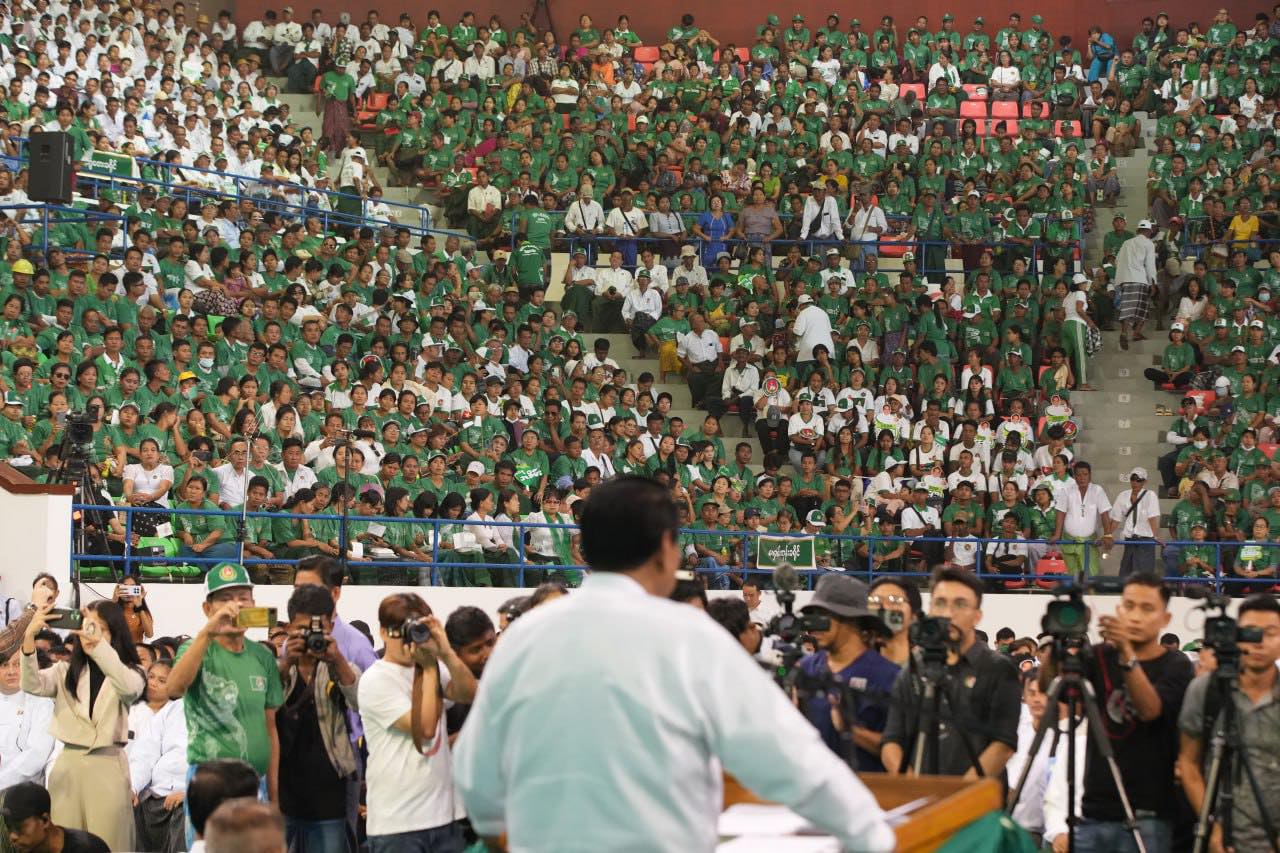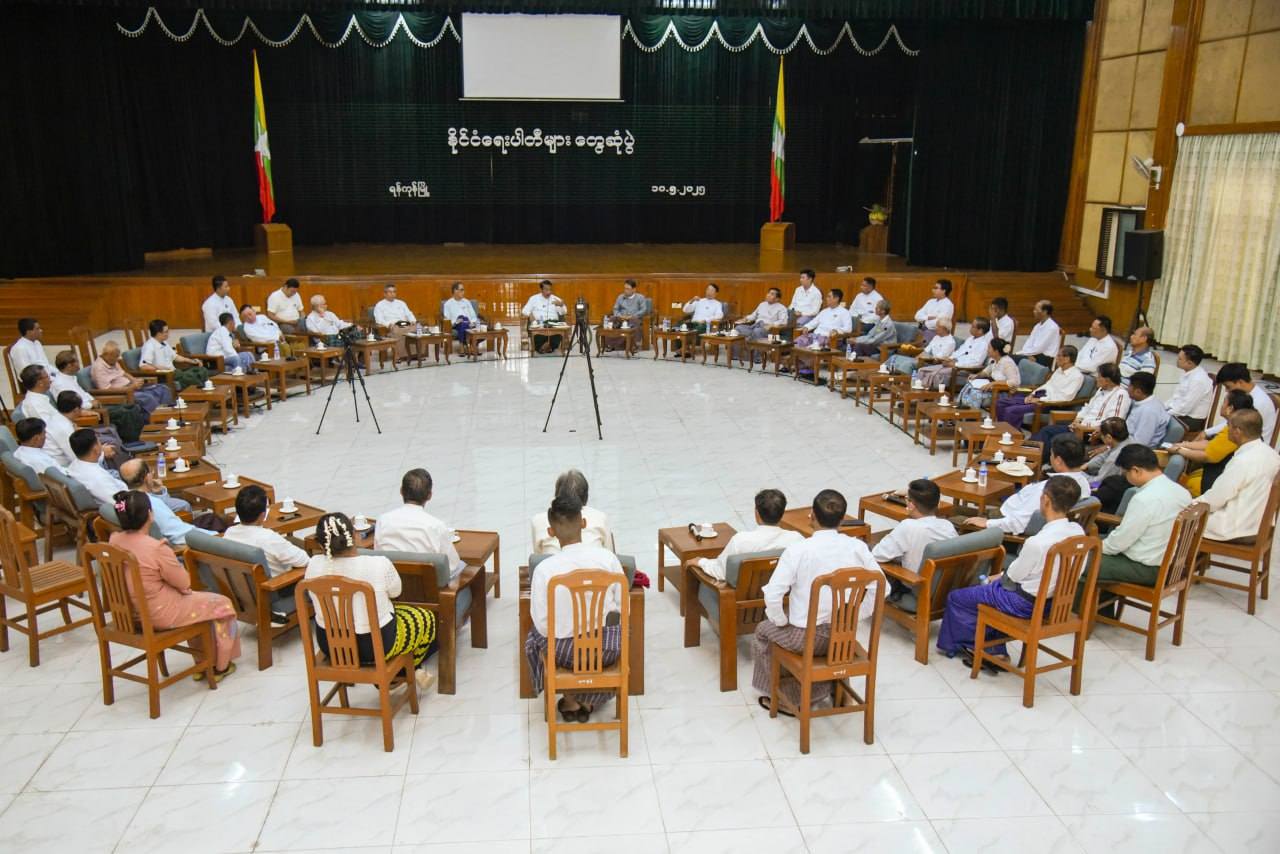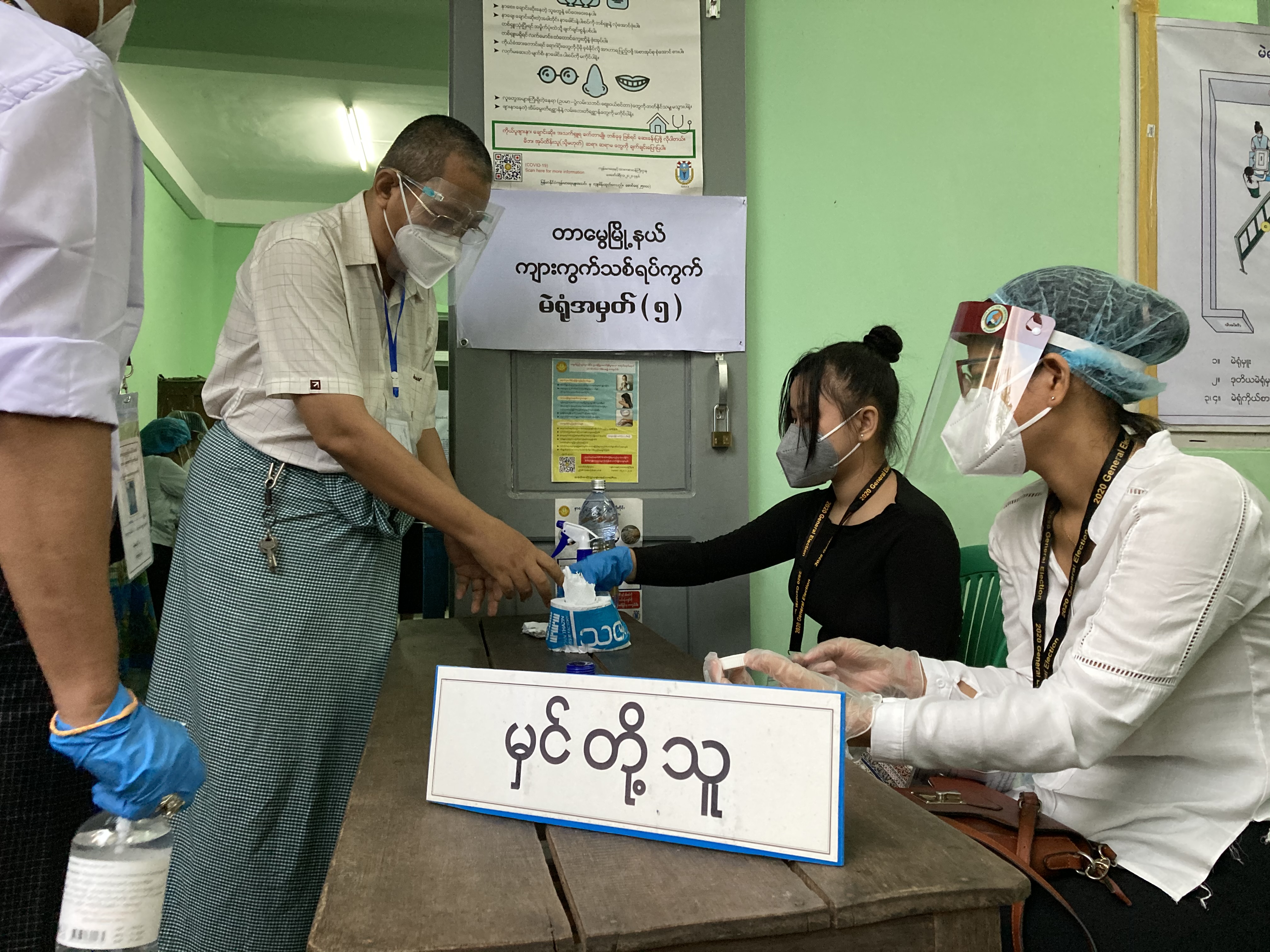CNI Articel
24 November 2025
Myanmar’s election has been announced to take place in three stages: Part (1) on December 28, 2025; Part (2) on January 11, 2026; and Part (3) in the final week of January 2026.
This election is described by some as one that could bring a turning point for the country, while others believe no change will come out of it at all.
In any case, it is important to understand how the public views the election, how they perceive it, what they expect from it, and what their desires are.
When referring to the public, it may be useful to categorize them into three groups:
The group that supports the military and the USDP
The neutral or undecided public
The public that supports the resistance movement
Among these three groups, the first and third are quite straightforward.

USDP campaigning
The first group supports the election and believes that the new government after the election will be led by the military and the USDP.
The third group opposes the election, so they have no interest in the election period or the post-election period.
Therefore, the opinions of the second group—the neutral public—regarding the election period and the post-election period are particularly interesting.
The neutral public does not like the current national situation.
For that reason, even though they do not fully like the election, they do not reject it; they simply watch the situation carefully, hoping that it might bring some kind of change to the current state of the country.
During the election period, the neutral public hopes for political parties that can address the day-to-day hardships faced by ordinary people.
Most of the neutral public does not trust or expect the promises of political parties about restoring democracy, establishing a federal union, achieving peace, or stopping the fighting.

Political parties meeting
Their reasoning is that these are policies that would take at least ten years to achieve, even under ideal circumstances, and in Myanmar’s current situation, they believe such promises are simply deceptive attempts to win votes.
Therefore, most of the neutral public expects and hopes only for practical election promises—those that can realistically address the social and livelihood hardships currently faced by the public.
Most people are struggling with rising commodity prices, unlawful arrests under the conscription law and demands for payments, shortages of goods, increasing theft and robbery, fewer job opportunities, reduced income, inflation, lack of safety during travel and extortion, weak rule of law, and the government’s poor response to public complaints.
Likewise, they face difficulties such as the inability to easily obtain passports, excessive payments demanded for processing them, restrictions on leaving the country, extortion under various pretexts, barriers to working abroad, lack of full electricity supply, extremely high land and rental prices, and excessively expensive vehicle prices.

People waiting to cast votes
Therefore, the majority of the public is considering voting only for political parties that promise—and seem capable of—solving these immediate social and livelihood problems.
At present, no political party has been seen campaigning with a credible promise to solve these problems, nor is there a party that has convincingly given such guarantees.
Moreover, the neutral public is also watching the post-election period with great interest, analyzing it carefully. They are considering which party might form the government, what kind of government might emerge, what policies might be adopted, which party in power could bring hope, and which might leave things unchanged.
In any case, given the political crisis, armed conflicts, international economic sanctions, the decline in livelihoods, inflation, weak national security and rule of law, halted trade flows, and social fragmentation in Myanmar, the neutral public hopes for a new government that can genuinely resolve these issues.
Thus, most of the neutral public hopes that the post-election government will be formed as a national unity government based on national reconciliation.
Their belief is that Myanmar’s numerous crises can only be overcome if all citizens unite and work together.
Therefore, it remains to be seen how the expectations of the three public groups will evolve during the election period and the post-election period.




